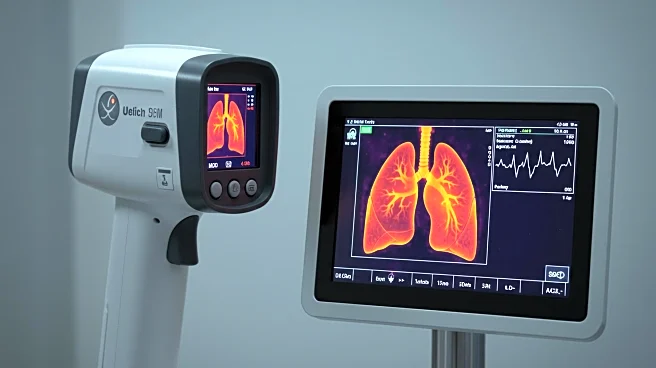Rapid Read • 8 min read
Infrared thermography, a technology that uses infrared radiation to measure surface temperature, has been applied in the medical field to diagnose emergency pulmonary infections. A study conducted at the First Affiliated Hospital of Guangzhou Medical University involved 200 patients, with 108 diagnosed with pulmonary infections. The technology was used to detect temperature variations in the chest area, providing a visual representation of infection sites. This method was compared to traditional X-ray examinations, which served as the gold standard for diagnosis. The study adhered to medical ethics standards, with informed consent obtained from all participants.
AD
The use of infrared thermography in diagnosing pulmonary infections represents a significant advancement in medical imaging technology. This method offers a non-invasive, real-time diagnostic tool that can potentially improve the accuracy and speed of detecting infections. It may reduce reliance on X-rays, which involve radiation exposure, thus offering a safer alternative for patients. The technology's ability to provide detailed thermal images can enhance the understanding of infection patterns, aiding in more precise treatment plans. This development could lead to broader applications in diagnosing other medical conditions, impacting healthcare practices and patient outcomes.
Further research and validation studies are likely needed to establish infrared thermography as a standard diagnostic tool for pulmonary infections. Medical institutions may explore integrating this technology into routine diagnostic procedures, potentially leading to its adoption in emergency departments. The technology's application could expand to other areas of medicine, prompting discussions on regulatory approvals and training for healthcare professionals. Stakeholders, including medical device manufacturers and healthcare providers, may invest in developing and refining infrared thermography equipment to enhance its accuracy and usability.
The adoption of infrared thermography in medical diagnostics raises ethical considerations regarding patient privacy and data security. As the technology captures detailed thermal images, ensuring the confidentiality of patient information becomes crucial. Additionally, the cost and accessibility of such advanced diagnostic tools may impact healthcare equity, necessitating discussions on how to make these technologies available to underserved populations. The long-term implications of reducing radiation exposure through alternative diagnostic methods could influence public health policies and patient safety standards.
AD
More Stories You Might Enjoy










